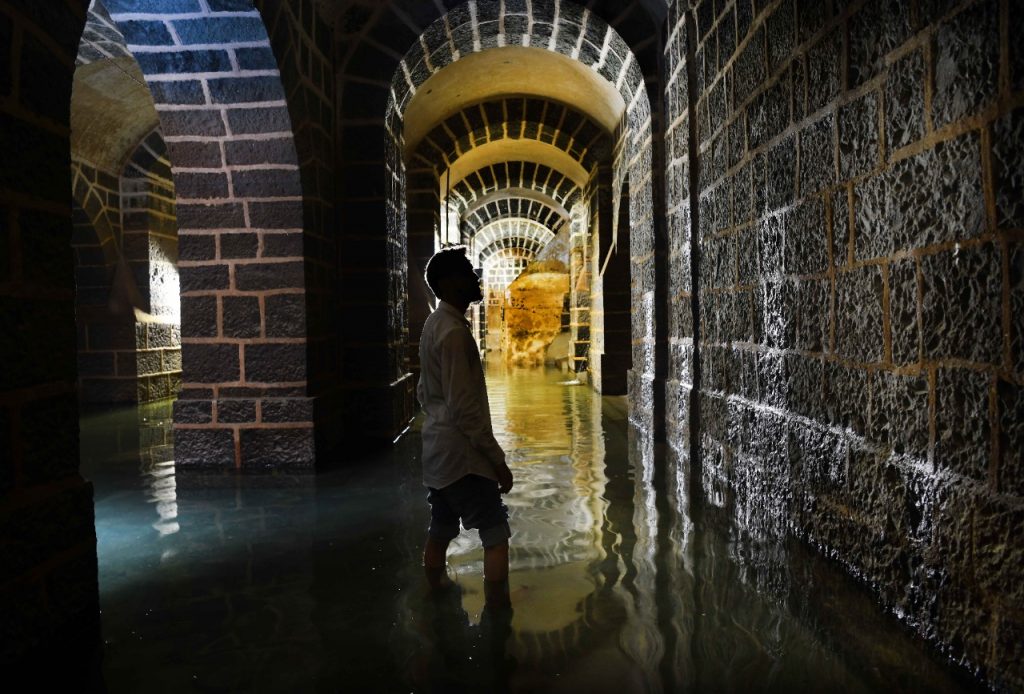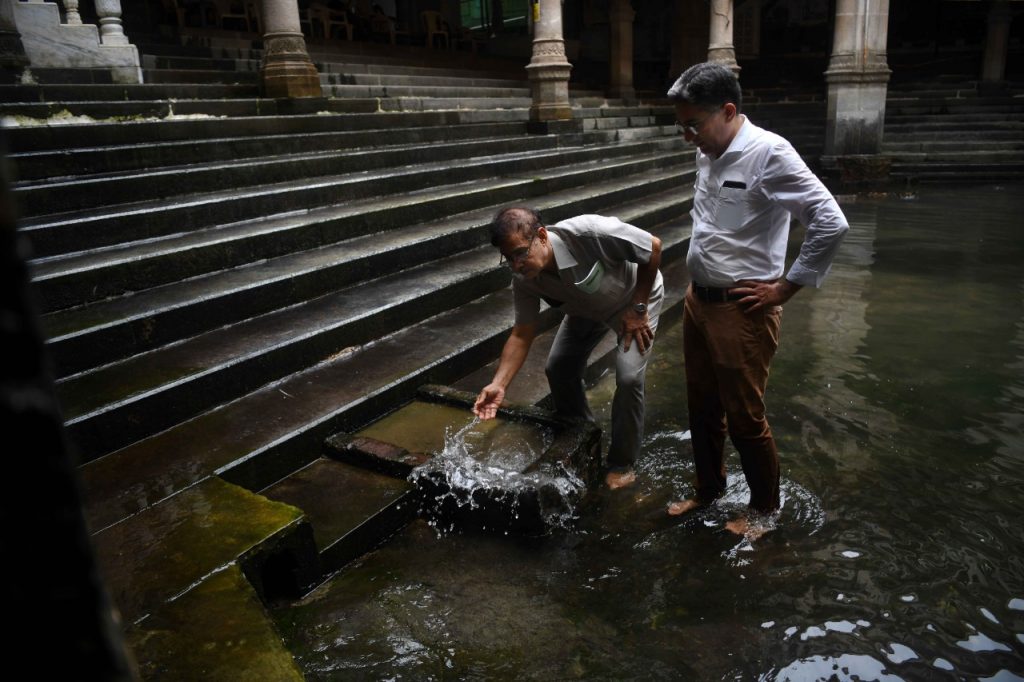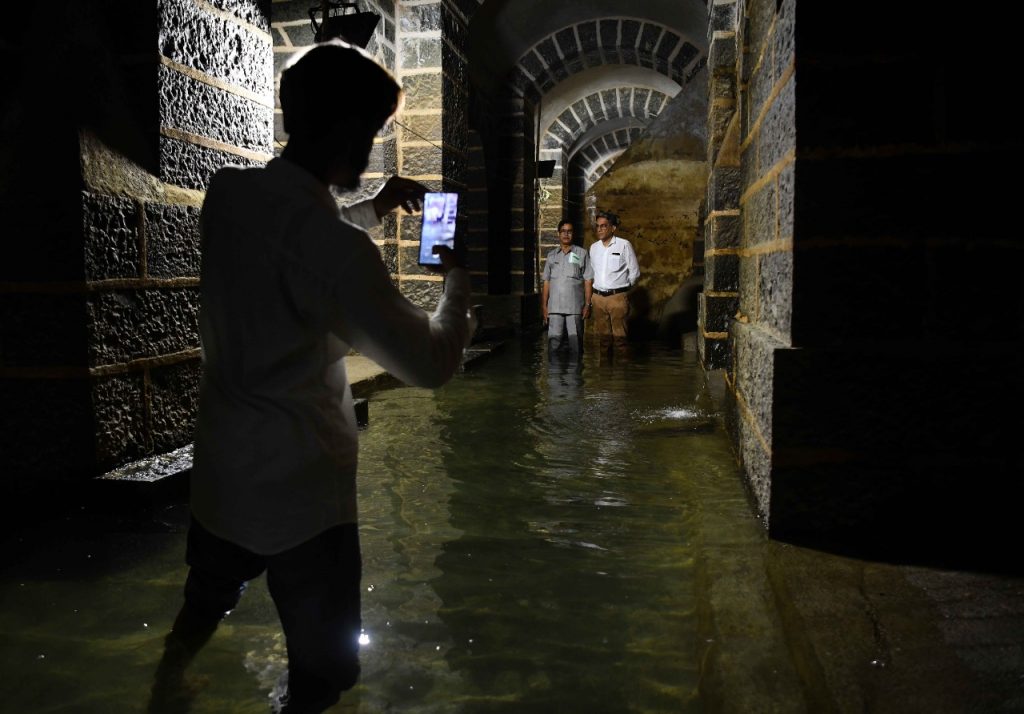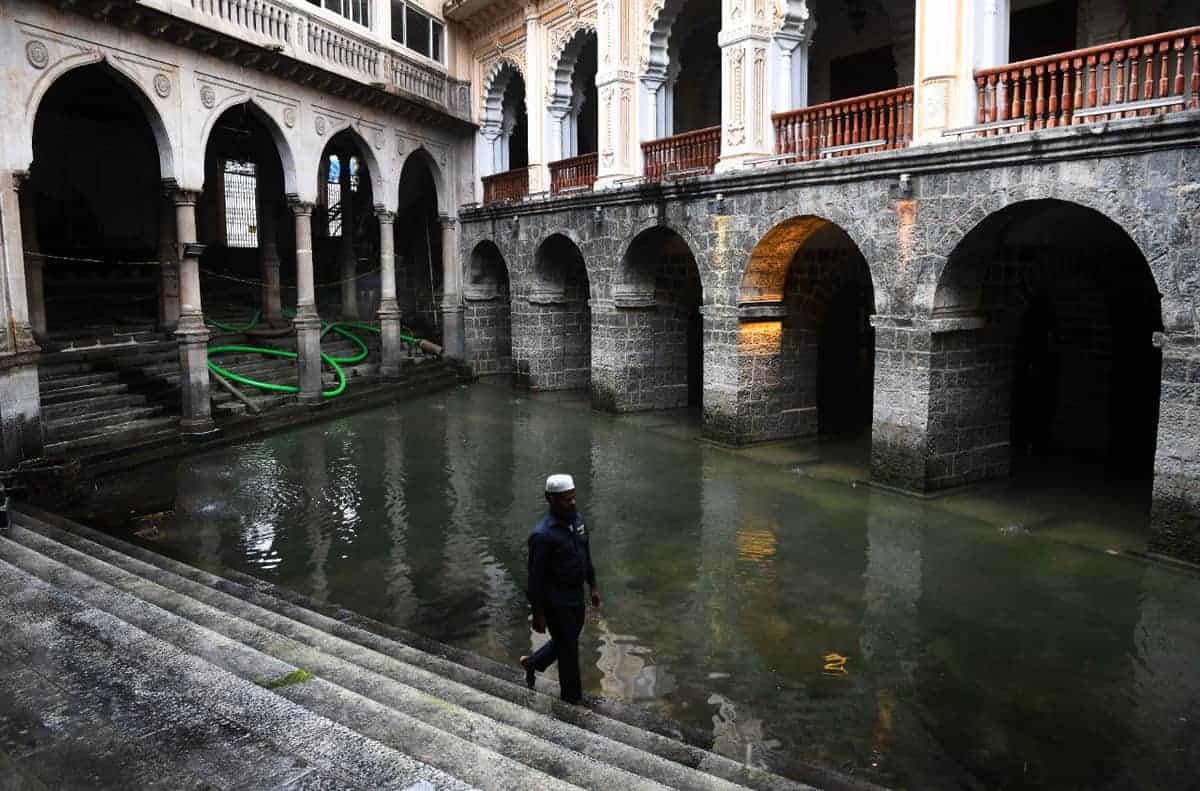
The turtles and the fish are perhaps feeling a bit crammed. The small tanks which temporarily hold them are no substitute for their bigger habitat, the ancient tank or pond on which the iconic two-storied, rectangular Juma Masjid near Crawford Market stands. The 222-year-old, 8 ft deep talab, accessed by masonry steps and used for ritual wazu or ablution before the namaz, has been cleaned of its water, fish and turtles for the first time in three decades.
“As the second wave of pandemic hit and places of worship were ordered to be shut, we thought to clean up the pond and check if the 13 springs that feed the 150 feet long, 90 feet wide and 8 feet deep pond are fine,” said Shoeb Khatib, chairman of Juma Masjid Bombay Trust which manages the mosque, Bada Khabristan at Marine Lines and a few other properties in the city. “It took three pumps and eight days to suck out the waters and remove 20 trucks of slush from the pond’s cemented floor.”

A Konkani Muslim merchant owned the large pond amidst gardens and agreed to construction of the mosque with a condition that the pond would be retained eternally. Construction work began in 1775 and seven arches and 49 stone pillars were erected to support the mosque’s fabric. Two dozen iron pillars were erected to hold the ground floor’s massive prayer hall’s ceiling decorated with beautiful motifs and engraving. Stained glass decorates the large window panes, making the prayer hall airy. Its first-floor prayer hall has just six pillars at corners with its pillar-less roof held by a scissors-like rooftop suspension.

“In 1835, Khadija the only daughter of famous philanthropist Nakhuda Mohammed Ali Roghe, died. He constructed the first floor in Khadija’s memory,” said Mohammed Ashfaque Kazi, chief Qazi or judge at Darul Ifta or the Shariah Court being run from the mosque. He added that in 1850 a library was also opened here. It has 16353 books, including 1610 rare manuscripts (1000 Arabic, 473 Persian and 137 Urdu). A 700-year-old Hadith book (sayings of the Prophet) and 300-year-old copy of the holy Quran are part of the collection. In 1912, a Turkish king, then custodian of the holy Kaaba in Makkah, donated Ka’ba’s kiswa or cover to the Juma Mosque in Bombay. The Ka’ba’s cover changed annually is made by stitching together 47 strips of cloth embroidered with Quranic verses, each strip being approximately 14 cm long and 101 cm in width. A Turkish king also donated a piece of the cloth from the cover that kept a kurta or robe of the Prophet at an Istanbul museum.

“This historic mosque can attract lots of national and international tourists, students and scholars researching heritage sites. We will consult the state tourism department to promote it through heritage walks,” said Mumbadevi MLA Amin Patel who, along with corporator Javed Juneja, facilitated the cleaning of the ancient tank. Shiv Sena’s Muslim face Sajid Supariwala who too visited the mosque recently said he would invite tourism and environment minister Aaditya Thackery for a visit to this fabulous piece of the city’s history.
In the pipeline is also closing some cracks on the stone walls of the pond from where water leaks, an oxygen plant to keep water bacteria-free and lightings at the pond to beautify it. “The pores on the stone walls need to be covered as leaking water would damage the structure. We are in touch with the heritage and water resources departments for proper guidance on restoration and preservation of the grade 2 A heritage structure,” said Khatib. As we prepare to leave, the muezzin calls out the afternoon prayer but not more than five devotees join the prayer. The turtles and fish keep floating in the temporary tanks, awaiting to splash in the big, ancient pond being refurbished.
Mohammed Wajihuddin, a senior journalist, is associated with The Times of India, Mumbai. This piece has been picked up from his blog

